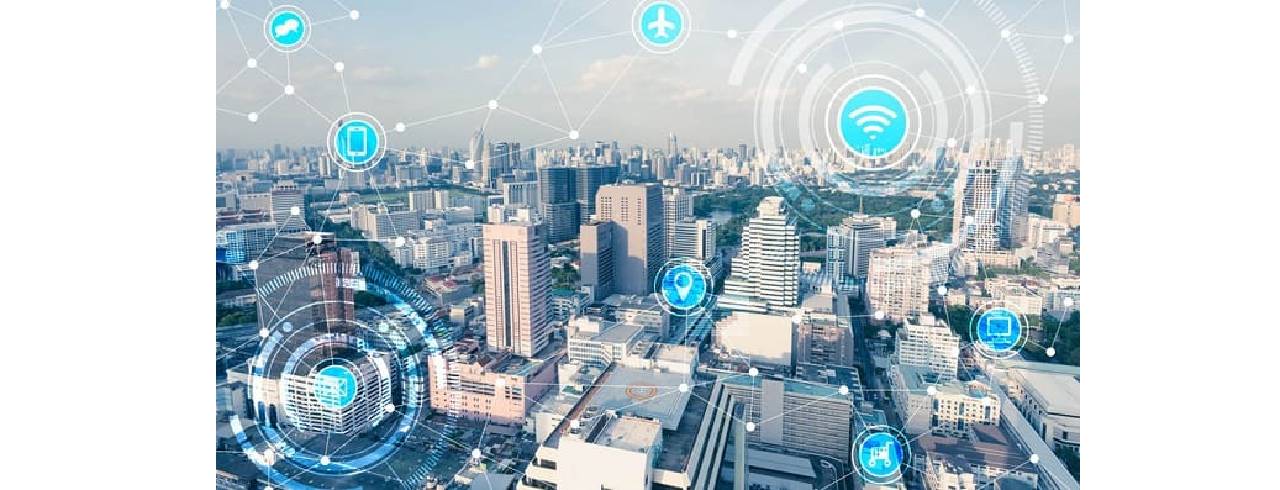The Internet of things allows a smart city to collect intelligence and increase efficiency by helping it comprehend where and how to apply resources. The same Internet of Things (IoT) technology may collect sensor data and offer data points on the interactions between city features. LoRaWAN module for smart cities may increase decision-making, sustainability, and the standard of living for its residents by collecting and analyzing data.

Every city should start by identifying its present problems and imagining its potential future problems, particularly those that population increase might bring. A city then needs to create a clear vision for the outcomes it wants to achieve. Ultimately, a city must choose what data to gather, how to acquire it, which other entities may collect it, and how the information will be maintained. Simply put, they must be aware of data collection and management technologies.
The desired goals, expected expenses, and prospective return on investment must all be considered when choosing technologies for a smart city.
What then constitutes a decent, if not excellent, IoT technology? Low Power Wide Area Networks are the greatest option for big IoT with hundreds of sensors. According to our experience, LoRaWAN provides cities with the broadest range of advantages for transforming into smart cities. The open technology LoRaWAN is adaptable, scalable, effective, and interoperable to meet the city's needs. Open standards promote durability and encourage ecosystem competition and interaction, lowering the risk for cities and tech firms.
The LoRa Alliance delivers an extensive accreditation program to assure cities that devices will be dependable and comply with the standards, minimizing potential support costs and assuring interoperability. This program is offered to ensure the right execution of the LoRaWAN specifications.
For a city to be fully connected, the network must be adaptable and able to support a range of use cases in various settings. Due to its distinct device-to-cloud architecture and several deployment options, LoRaWAN module can deliver scalable and omnipresent coverage in the diverse terrain of a smart city. Coverage is made possible by LoRaWAN's best-in-class penetrative capability, which allows for indoor and outdoor operation and underground operation. To connect the dispersed endpoints throughout a metropolis, this is crucial. Let's look at some more benefits of LoRaWAN for smart cities.
Supporting thousands of devices per gateway is one of LoRaWAN's key advantages. The true scale at an affordable price is made possible by the sophisticated communications infrastructure that supports redundancy across gateways.
The sensor/reduced device's power consumption, which results in longer battery life, is a significant advantage of LoRaWAN module. It is possible to decide on the communications technology based only on a brief, informal review. LoRaWAN provides up to seven times more battery life, which results in significant cost savings throughout the device.
In terms of technology and economics, LoRaWAN implementations are adaptable. The placement of gateways or collecting points across a city is possible thanks to the flexible nature of the LoRaWAN network infrastructure from a technological standpoint. Given the small size and power requirements, the cost is quite low. Gateways can be positioned indoors or outdoors, placed on structures such as towers or towers, or even housed inside items like street furniture. For various deployment needs, numerous solutions are available thanks to an expanding community of vendors.
Due to the flexibility of the LoRaWAN network, a city can choose between creating a private network, investing in a public network, joining a public network, or choosing a perfect blend. Cities can create their LoRaWAN network using standard protocols and internationally accessible hardware. Or they can choose to collaborate with technology providers on a managed service solution and use the knowledge and expertise of more than 166 LoRaWAN operators worldwide. Last, LoRaWAN offers the utmost commercial flexibility because it can wander among these various commercial deployment possibilities using the established standards.
Without considering data privacy and security, no consideration of smart city technology options is meaningful. Security was a primary consideration during the design and development of LoRaWAN. The employment of two 128-bit AES encryption keys, one for the network and one for the application, is the basis of LoRaWAN security. We strongly advise reviewing the security information posted on the LoRa Alliance portal.
LoRaWAN's capabilities allow the largest range of devices to support the countless applications cities wish to investigate. Using LoRaWAN as the center of your implementation will be crucial to optimizing your investment in smart cities because of the ubiquitous architecture of LoRaWAN module, which enables a single coverage model to enable the large majority of low bandwidth use cases. Due to the variety of LoRaWAN, the adaptability of the business models, the size of the ecosystem, and the lowest operating expenses in its class, high ROIs are possible.
Working with technology that is so proficient and well-suited for the intended goal is remarkable. LoRaWAN is perfectly equipped to be the preferred technology for smart cities worldwide. Understanding that with solid information and stronger insights, cities will grow more sustainable, comfortable, and productive, LoRaWAN smart cities can boldly start or sustain their smart programs.